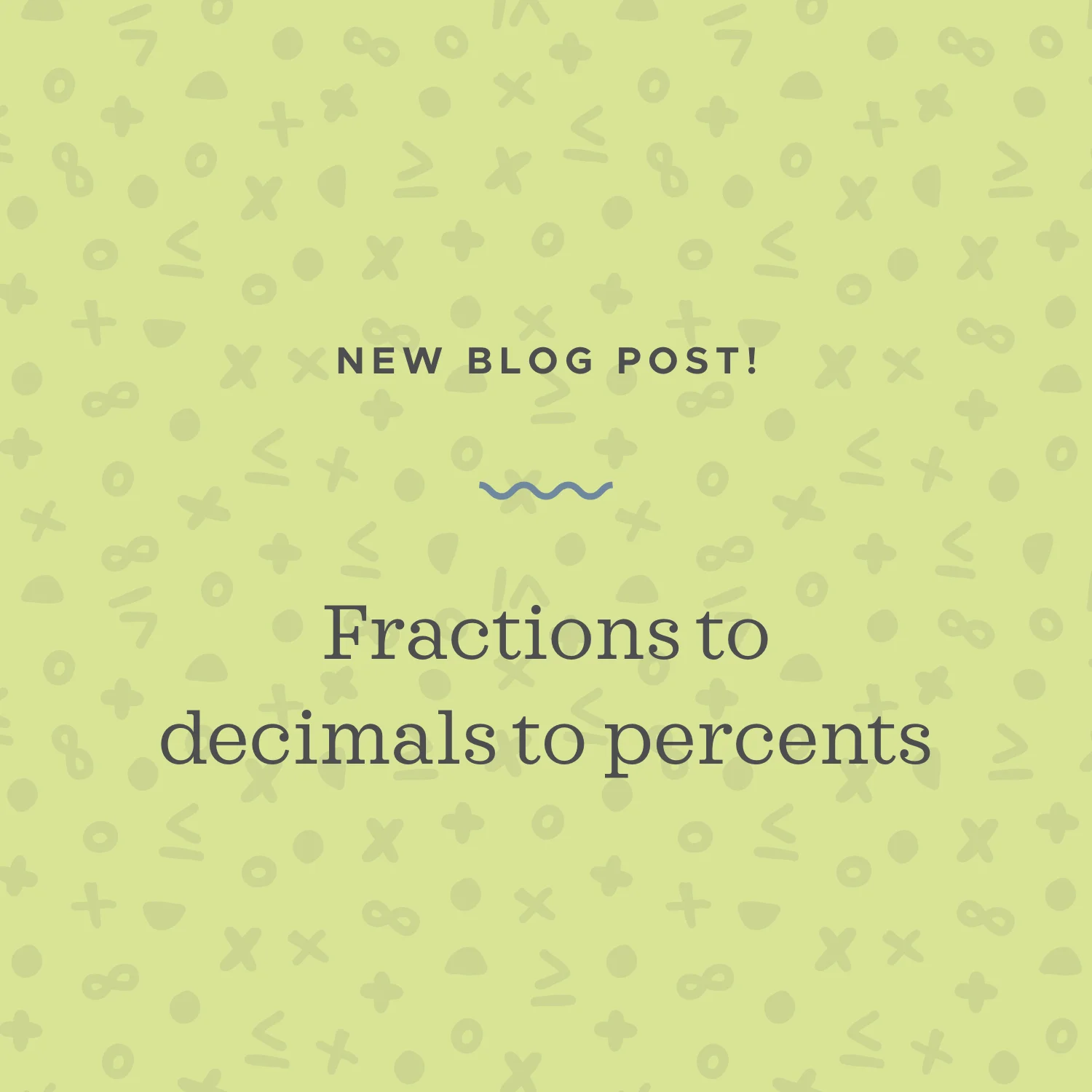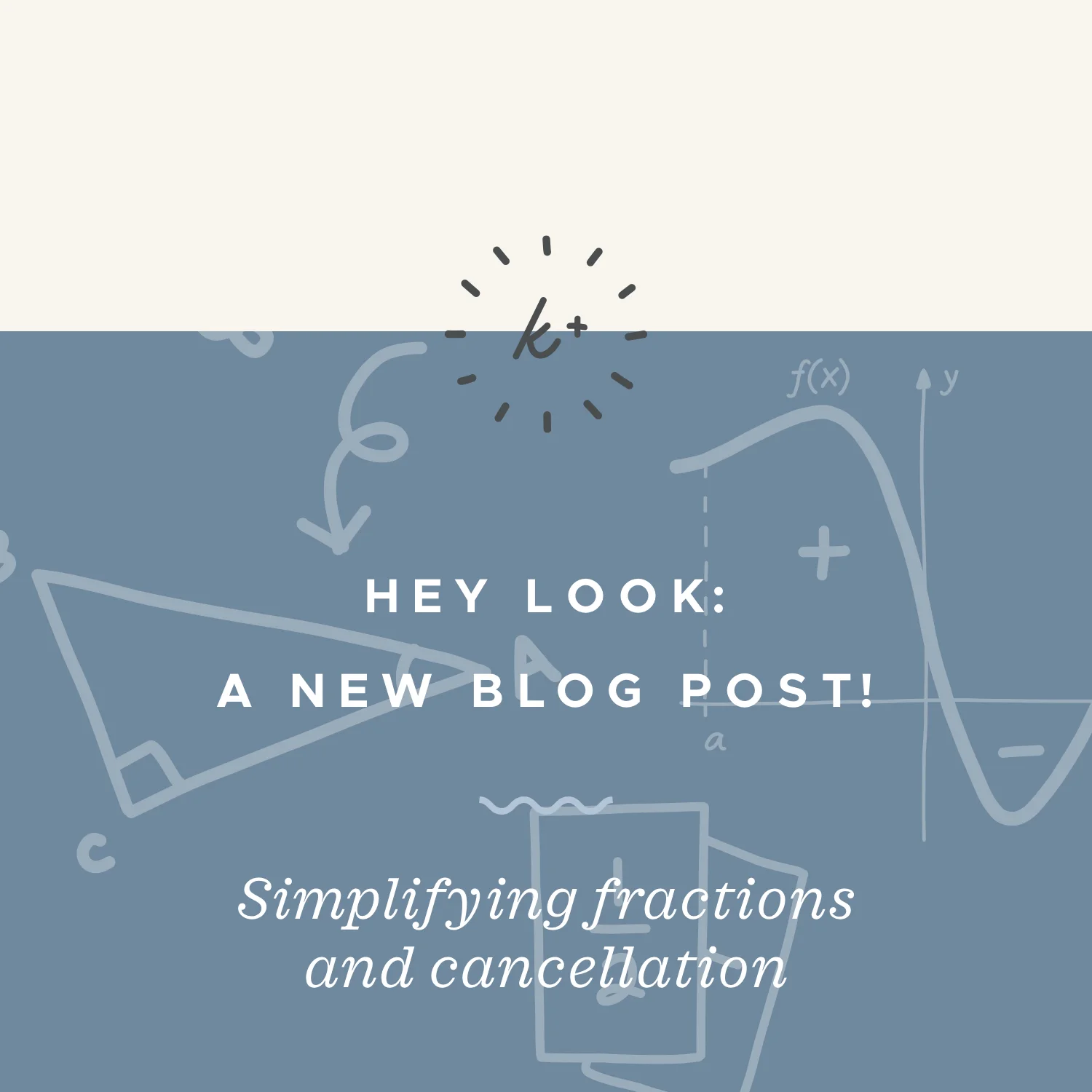A fraction may look like a completely different kind of number, but the way we need to think about it is just as “part of a whole”. A fraction always has two numbers: the top number, which is called the “numerator,” and the bottom number, which is called the “denominator.”
Read MoreIn this lesson, we're going to focus on particular kinds of fractions. We'll start out by talking about positive fractions, and then we’ll deal with negative fractions at the end of the lesson. Up until now, most of the fractions we’ve dealt with are what we call “proper” fractions, where the numerator is less than the denominator.
Read MoreWe can add and subtract mixed numbers, each of which is the sum of a whole number and a fraction. When we need to add or subtract mixed numbers, we deal with the whole numbers separately from the fractions, and we find a common denominator for the fractions.
Read MoreIn this lesson, we’ll learn how to convert between fractions, decimals, and percents. We can always use a proportion to help us convert between fractions, decimals, and percents. We’ll follow a very specific rule for each conversion, so we’ll look at the conversion between fractions and decimals, fractions and percents, and decimals and percents.
Read MoreThere are two ways that fractions get involved in exponents. The first is when the exponent itself is a fraction. The second is when the base is a fraction, and we’re raising that fractional base to an exponent. This lesson will cover how to find the power of a fraction as well as introduce how to work with fractional exponents.
Read MoreThe reason we want to reduce fractions to lowest terms is that even though a fraction like 630/945 is actually the same as 2/3, that isn’t obvious to us when we look at it since the numbers are so big. But if we simplify that larger fraction down to 2/3, then we’ll be able to easily tell that we have “2 out of 3 parts.”
Read MoreThe reciprocal of a fraction is what you get when you turn the fraction upside down. We first saw the reciprocal when we learned about dividing by fractions, because that fraction division process required us to multiply by the reciprocal. In other words, what you get when you switch its numerator with its denominator. So the reciprocal of 3/4 is 4/3.
Read MoreIn this lesson we’ll look at how to reduce rational expressions and how cancelling can be a useful technique to help us reduce them. To reduce a fraction or a rational expression there must be a common factor in all of the parts that are being added or subtracted.
Read MoreWe already know how to simplify a fraction to lowest terms. We just pull out the common factors from the numerator and denominator, cancel those out, and what’s left is the fraction simplified to lowest terms, resulting in an equivalent fraction.
Read MoreThe first thing we'll deal with is how to determine which of two fractions is greater than the other. If two fractions have the same denominator, the fraction with the greater numerator is the greater one.
Read MoreBecause the two ratios in a proportion are equal to each other, a proportion is an equation that expresses the equivalence of two fractions. So a ratio is just a fraction, and a proportion is an equation that sets two fractions equal to each other.
Read MoreOne of the important things to remember about fractions is that we can never divide by 0. Since we’re always dividing by whatever is in the denominator, this just means that we can’t have 0 in the denominator of a fraction. It’s just one of those weird things in math that we can’t do.
Read MoreThere are three signs associated with every fraction, one with the numerator, one with the denominator, and one with the fraction in general. But this can be hard to remember, because not all of the signs are always visible.
Read MoreWhen we multiply fractions, we multiply their numerators to find the numerator of the result, and we multiply their denominators to find the denominator of the result. When we divide fractions, we actually turn the division problem into a multiplication problem by turning the divisor upside down and changing the division symbol to a multiplication symbol at the same time.
Read MoreFinding the difference quotient when your function is a fraction can be confusing, but there's actually a really easy way to handle it!
Read More















